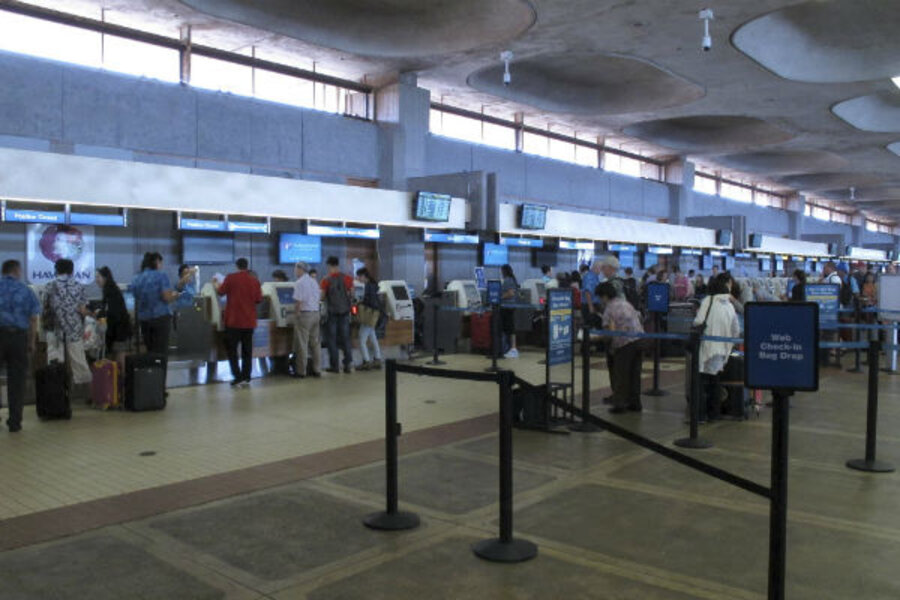How did stowaway teen go unnoticed for seven hours on San Jose airfield?
Loading...
Despite the tens of billions of dollars that the United States has poured into airport security since the 9/11 attacks, a 15-year-old boy has revealed a gaping hole in the safeguards.
The Santa Clara, Calif., teen managed to sneak onto the airfield of Mineta San Jose International Airport, cross the tarmac, and climb up into the wheel well of a Hawaiian Airlines jetliner bound for Hawaii, where he apparently slept for an hour after the plane landed in Maui.
The boy told authorities that he had broached the perimeter of the airfield by hopping a fence. Authorities believe that he fell asleep before the plane took off at 8 a.m. on Sunday and probably fell unconscious en route because of extreme cold and high altitude.
Armed with nothing more than a comb, the teen was “just a runaway kid with a bad idea,” FBI Special Agent Tom Simon told NPR.
But the fact that a kid who seems to know little about airports could find his way into a restricted airfield at a major international airport raises the question: Could a terrorist do the same?
The Transportation Security Administration has spent $80 billion on aviation security since the agency was formed in the wake of the 9/11 hijackings. However, the TSA’s jurisdiction is inside airports, where officers are responsible for screening passengers and baggage. The exterior areas of the airport and perimeter security fall under the jurisdiction of local authorities.
“We were investing all our resources in the front door, which were the passengers and their bags,” Rafi Ron, former head of security at Israel's closely guarded Ben Gurion Airport, told the Associated Press. “And we left the back door open. And that was the perimeter and access to aircraft.”
In addition to live patrols by Segway-riding police officers and German shepherds, San Jose employs dozens of cameras to monitor restricted areas of the 1,050-acre airport. The cameras did capture footage of the boy wandering the tarmac a little after 1 a.m. Sunday, a law enforcement official briefed on the investigation told AP on condition of anonymity. Apparently, no one noticed, even though he spent nearly seven hours in the supposedly restricted zone.
While video footage can be useful for retroactively reconstructing breaches of security, it can be effective in real time only if people are actually monitoring the cameras.
"What happened in San Jose can happen as we speak at other airports, because nobody can watch all these monitors" that feed video from around the airport, Mr. Ron, now CEO of the consulting firm New Age Security Solutions in Dulles, Va., told AP.
Some airports do employ specialized intrusion detection software that scans video feeds in real time and alerts security personnel to any suspicious activity. Such systems are expensive and can result in numerous false alarms.
Poorly performing systems might have 10 false alarms per camera per day, Illy Gruber of NICE Systems, a company that provides such software to airports, told AP.
"It's way too many alerts," she said. As a result, they "are going to be ignored."
There have been 105 known wheel-well stowaway attempts worldwide since 1947. Only one-quarter of the stowaways have survived.
Authorities told CNN that the boy was hoping to hitch a ride to see his mother in Somalia and did not know that the plane was bound for Hawaii.
• Material from the Associated Press was used in this report.






